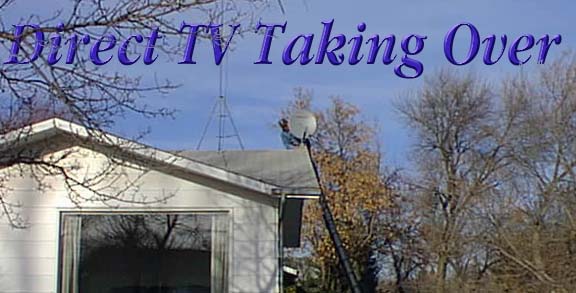
This is Beeland Coop's installer hard at work Monday afternoon with the Coop being one of the major sellers of dishes in the area.
Though the huge number of channels seems attractive, the monthly cost is high and when you consider since 1956 most of us considered television a free service, the desire to obtiain movies and variety on your television set has produced this unusual development. The technology that makes direct television interesting is that it uses MPEG compression to transmit to and from the satellite this huge number of channels. Unlike cable which uses an anology signal the little dish technology requires that the signal be translated from a digital format back to analogy for viewing. For this reason every television in your household system will see only the signal being translated so the system is far less flexible then either cable or public broadcast.
In some neighbourhoods nearly every house on a block has one of these devices. At about $600 a year for service plus the cost of the equipment and no local channels, one wonders what this will do to the whole entertainment industry. Already we have seen the decline in quality on Canada's three networks as their market share for advertising is shrinking and cable companies are cutting their prices to keep their hand in. What is so surprising is that the public is willing to go to this expense and still having to receive hours and hours of commericals on television they have to pay for.